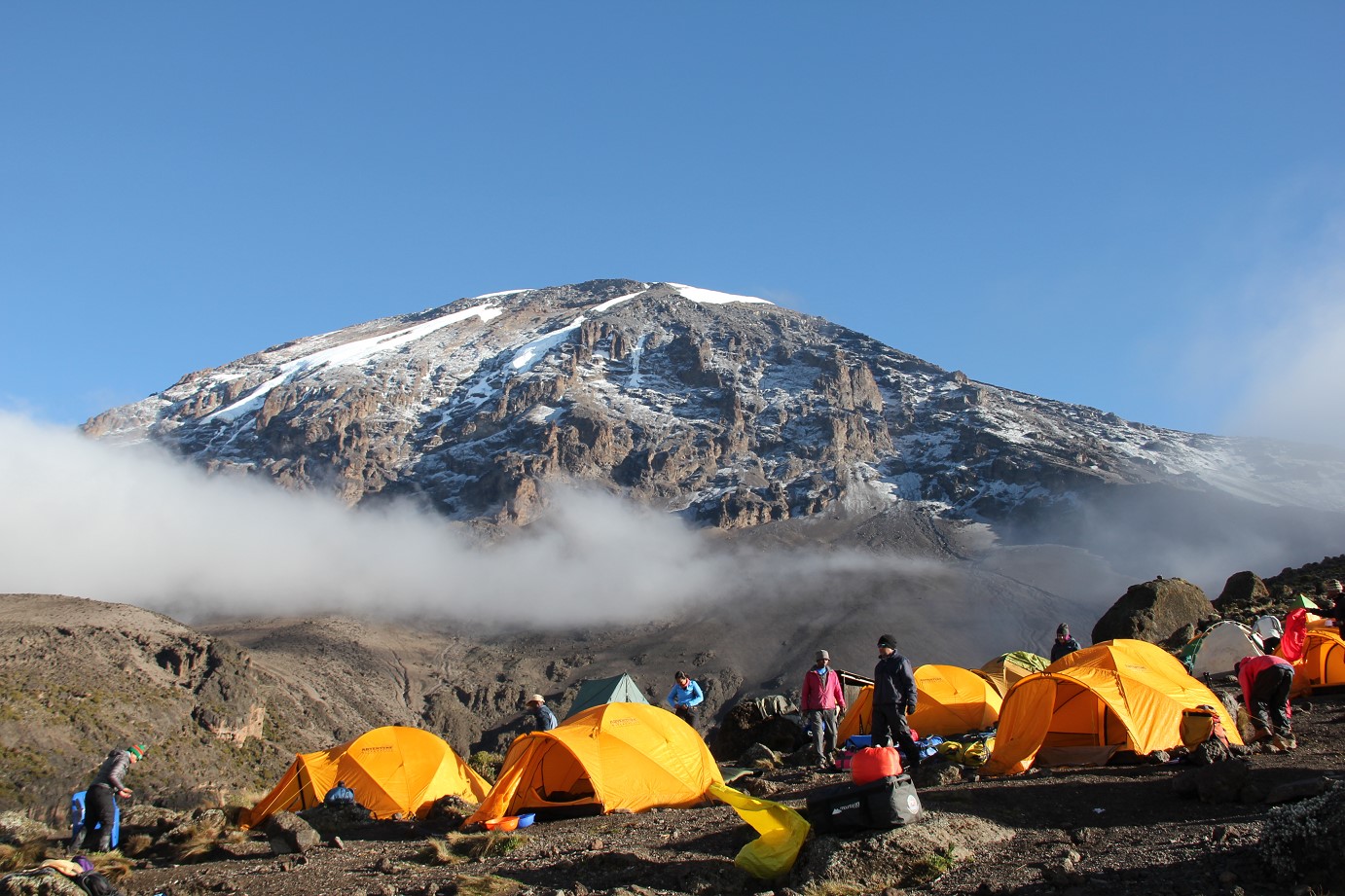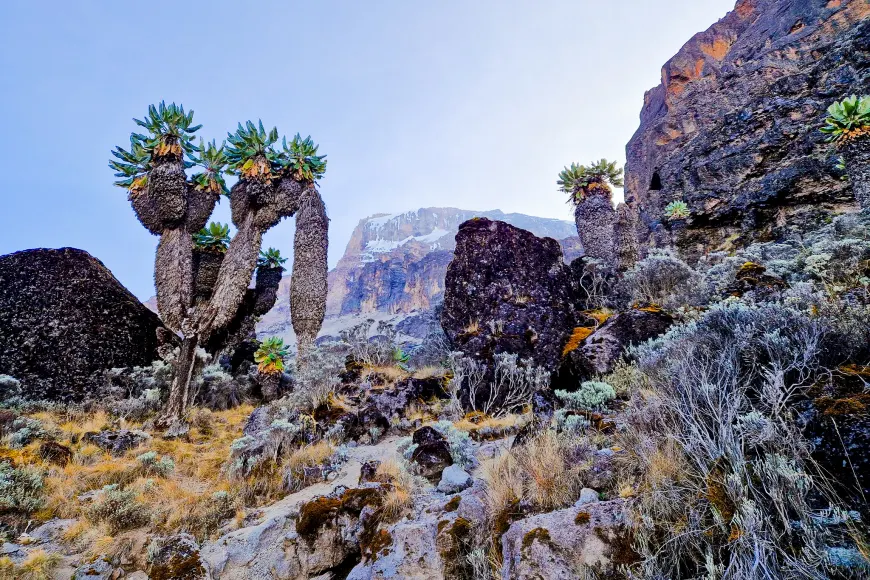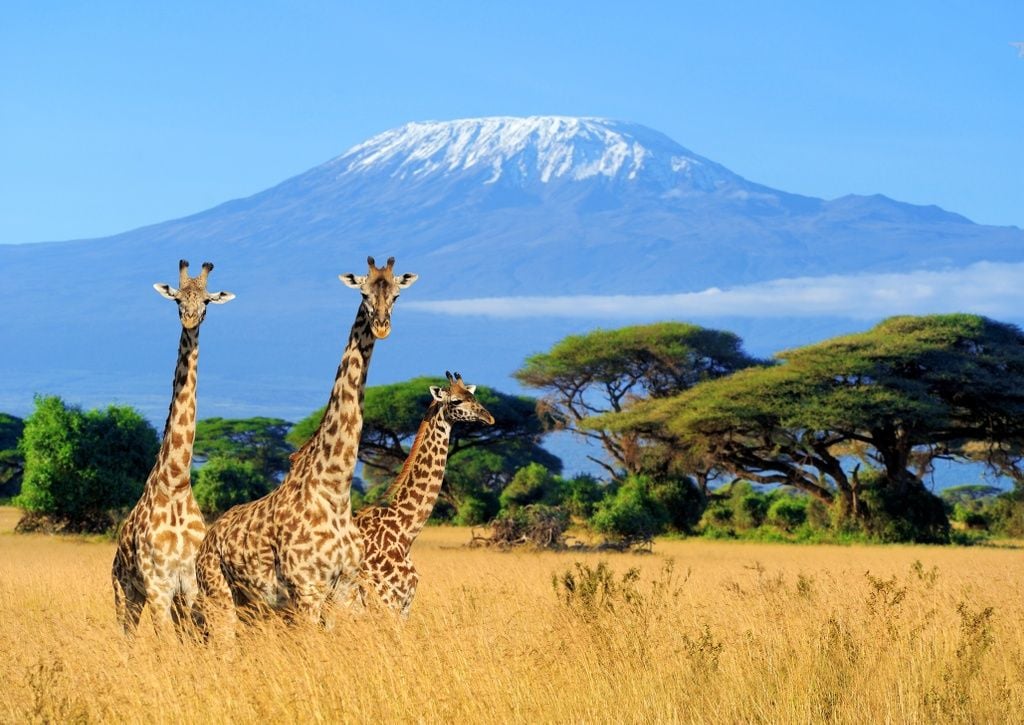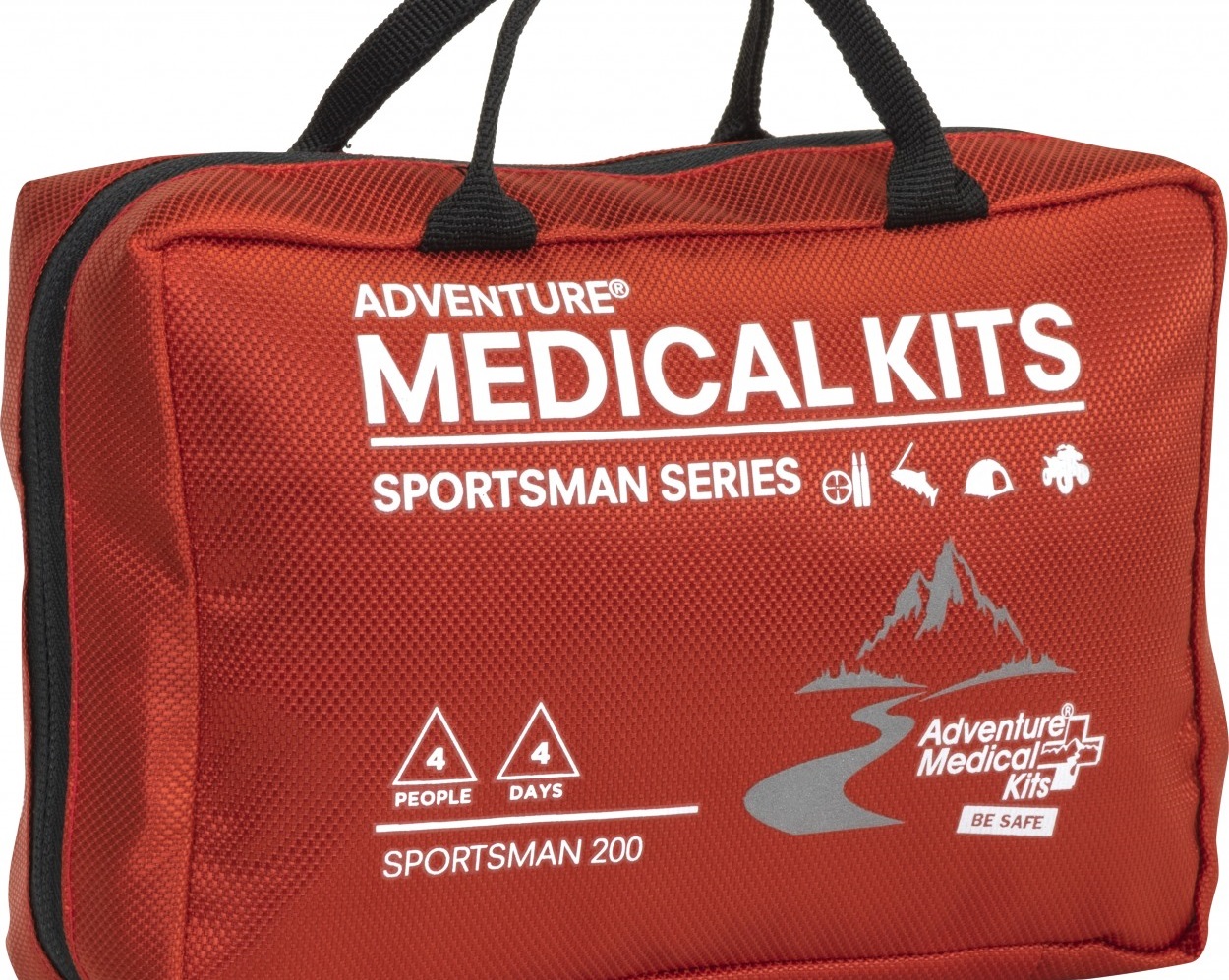KILIMANJARO MOUNTAIN ROUTES

ABOUT TREKKING ROUTES ON KILIMANJARO MOUNTAIN
Mount Kilimanjaro is the world's highest free-standing mountain. It is known as the “Roof of Africa” (Standing at 5,895 meters). Embark on a seven-day journey that unveils breathtaking glacial landscapes, mesmerizing sunrises, and the charm of rare flora amidst tropical forests. Feel the thrill of exploration as you traverse this unique hiking adventure. No technical climbing skills are needed. With a moderate level of fitness and the help of our expert guides, you'll conquer this iconic mountain.
Mt Kilimanjaro Routes
Marangu Route

The Marangu route, famously known as the "Coca-Cola" route as you can get a bottle of Coca-Cola at each hut, is the original route established to climb Kilimanjaro. It is often billed as one of the easier walking routes . Approaching Mount Kilimanjaro from the southeast, the Marangu route uses the same ascent and descent route which means it is less scenic than the other routes.
For climbers who do not wish to camp, then Marangu is the only route that offers dormitory-style hut accommodation. The huts have a communal dining room, simple washrooms and toilets which lower down will be flushable, but as you move higher up the mountain will be "long drop" loos. Although some climbers like the idea of staying in the huts rather than camping you need to remember that on the Marangu route you will be sharing the hut with lots of other climbers in open dormitory accommodation. The hut accommodation also means the Marangu route is one of the best routes to make the attempt on Kilimanjaro during the rainy season.
Machame Route

The Machame route is also known as the Whiskey route, given its reputation for being a tough climb, in contrast to the easier Marangu route, which is known as the Coca Cola route. Unlike the gradual incline and hut accomodations found on the Marangu Route, the climbers on Machame hike steeper trails, for longer distances, while sleeping in tents.The Machame Route climb can be done in a minimum of six days on the mountain. However, it is most often tackled over seven days, for a better altitude acclimatization schedule.
|The trek begins at Machame Gate, located in the southern base of mountain, within its lush, fertile rain forest. The route heads toward the Shira Plateau, before circling along the southern circuit halfway around the mountain, exposing the climber to great views from all angles. The approach to the summit is made from the east, and the descent follows the Mweka trail.
Lemosho Route

The Lemosho route is one of the newest Kilimanjaro routes. It was introduced as an alternative to the Shira route, which starts at a higher and therefore more challenging altitude.
The Lemosho offers gorgeous scenery. We love the rather untouched, wild start to the trail. We also love how the scenery changes from day to day.
The Lemosho can be completed in seven or eight days. The eight-day Lemosho route has one of the best summit success rates of all the trails on Kilimanjaro, and is yet another reason why we recommend this route highly!
Shira Route

Shira Route is a little used trail that begins near Shira Ridge, amd it is nearly identical to the Lemosho route. Actually, Shira route was the original route of the Western side of Kilimanjaro, and Lemosho is the improved variation of the same.
Shira is a varied and absolutely beautiful route, but it is less favorable due to the relatively high altitude of its starting point, which is accessed quickly by vehicle. It is possible that climbers could experience some altitude related symptoms on the first day while camping at 11,800 feet.
The route approaches Mount Kilimanjaro from the west, beginning with a long drive from Moshi to Shira Ridge. The vehicle bypasses the rain forest zone and the hiking trail begins on Shira Ridge.
The Shira route crosses the entire Shira Plateau from west to east in a pleasant, relatively flat hike. Then the route traverses underneath Kilimanjaro’s Southern Ice Field on a path known as the Southern Circuit before summiting from Barafu. Descent is made via the Mweka route.
Rongai Route

The Kilimanjaro Rongai Route is considered one of the less scenic routes up the mountain. Still, because the northern side of Kilimanjaro receives less rainfall, you’ll get to enjoy clear and unclouded views of the mountaintop. Mount Kilimanjaro Rongai Route takes 6-7 days to climb. Though, we highly recommend our 7-day itinerary, Above the African Plains as it gives you an extra day to acclimatize.
|Because of the route’s remote nature, it’s among the least frequented trails on Kilimanjaro. Those who pick this route will experience a peaceful climb and have the path to themselves for hours or even days at a time. The Rongai Route Success Rate ranges from medium to high. An important fact to remember is that the route doesn’t offer many climb-high and sleep-low opportunities.
Umbwe Route

Umbwe route is a short, steep and direct route which based in the south and is said to be the most scenic and difficult one offered on Kilimanjaro. Main reason that Umbwe route considered to be very hard is its steepness in the first two days with extremely muddy. Although the traffic on this route is low, the chances of success are also low. This route only recommended for experienced and well-trained climbers. Its short time of acclimatization within a 6-day/5-night tour.
Northern Circuit Route

The Northern Circuit is the newest and longest route on Mount Kilimanjaro. It begins in the West at the Londorossi Gate and follows the same path as the Lemosho Route for the first two days. After crossing the Shira plateau the path veers north near Lava Tower, following the longer Northern Circuit instead of the more popular Southern Circuit via Barranco Valley The route circles around the quieter northern slopes to the east side of the mountain. The Northern Circuit is longer than the other trails on Kilimanjaro, taking a minimum of eight or nine days to complete. The eight-day trek skips the additional acclimatization day that is usually spent at Shira Camp 2 and continues straight on to Moir Camp.







